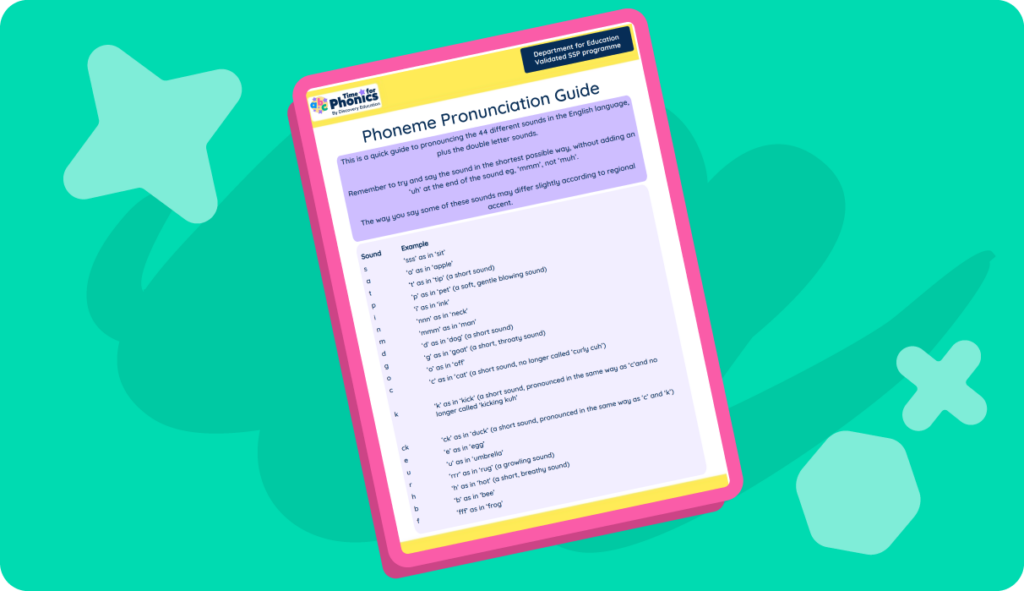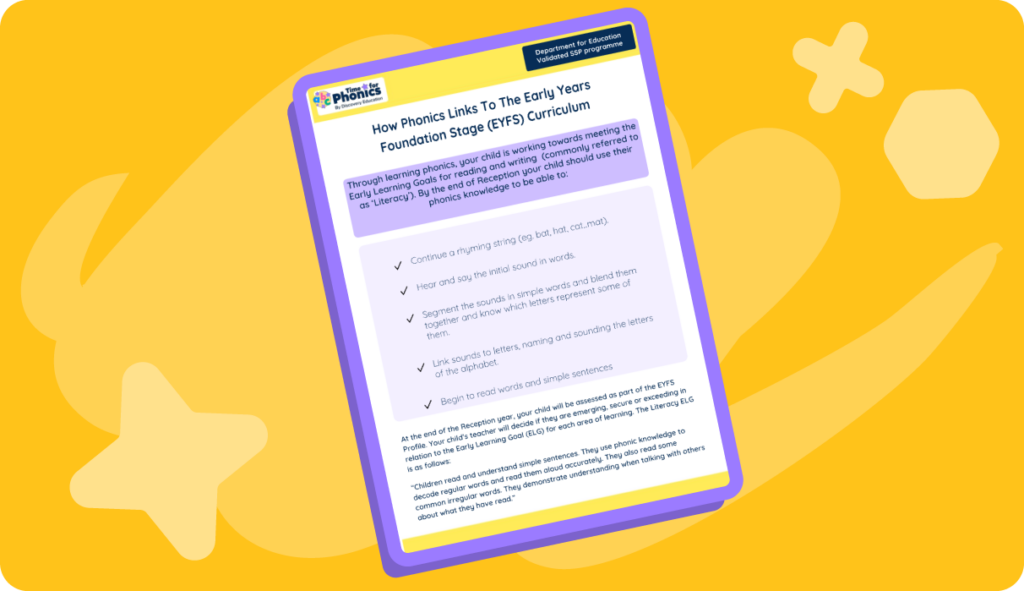Parent Resources
These resources have been designed to help you support your child with early reading and writing.


A guide for parents for how to pronounce the 44 different sounds in the English language.

Information for parents about how phonics relates to the curriculum in the Early Years Foundation Stage.
Company
Resources
Terms
Our products